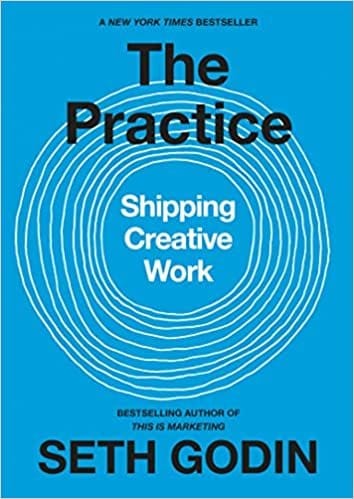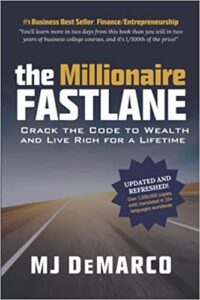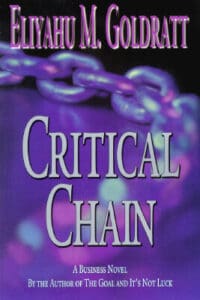The Practice – Seth Godin
This post contains affiliate links that help supports this blog and cost you the exact same. If you do not wish to use affiliate links, then feel free to google the product.

Date Consumed: March 2022
You Should Read If: you are trying to build a brand and produce anything that is better than good.
ISBN: 978-0593328972
Hi everyone. The below book link is an Amazon Affiliate link. This cost you the exact same amount while providing me with a small commission. This helps support the blog and allows me to continue sharing with you. I greatly appreciate your support. If you do not want to use the affiliate links, just search for the book on Google or Amazon.
The Book in 3 Sentences
- You do not control the results, only the process. So do not focus on the end results, instead focus on the practice by doing good work.
- Committing to a practice that makes our best better is all we can do.
- Shipping creative work. You ship because if you do not share it does not count, it is creative because you create something better or something that is new, and work because it is not your hobby, you approach it like a professional. The work is why you are here.
Impressions and general feelings about the book
- As a creative engineer, this is one of the most important books I have read in the past few years. This and Austin Kleon’s Steal like an artist trilogy are two books I believe should be required reading for anyone that is trying to create a voice of their own.
- This book fully expresses the difficulty and importance of creating good work and sharing it with an audience. Your work must not just be for yourself, because that is the easy way out. Instead, it must be for an audience to create an impact, regardless of how hard of a task this may be.
- When we ship our creative work, whether that is painting, publishing an article, singing a song, or designing a building we impact others by giving them another lens to view the world by.
- This book helped validate fears and concerns I had and still have every time I write or every time I design a new part, or make something new.
How the book changed me
- I will continue my process regardless of the results. Instead of searching for a certain outcome I will focus on my practice and continue trying to make the best work I can and publish it for my audience.
- This book explored and validated how better clients make better producers. As a creator when we search out better clients, we end up being pushed into creating something that we can be proud of. Bad clients on the other hand are the low-hanging fruit, the ones that will complain about everything, the ones that do not understand the art, the ones that want the commodity. We are not a commodity.
- This book reinforced that we do not write when we have good ideas, we have good ideas when we write. There will never be a lack of ideas, instead, when we ship our work we actually become more creative and come up with better ways of communicating our new ideas.
- We must postpone gratification for as long as possible. By seeking results, and immediate payoff we tend to skew our process and handicap ourselves in the long run. We find what works and continually produce what works. But when we delay our gratification and focus instead on producing better work, the results and quality of our work can be exponentially greater.
What I am going to implement immediately in my life
- Double down on the practice. I am going to spend more time writing, more time reading, and more time thinking. I am going to spend more time on the practice and continually tell myself it is the practice that counts.
- Not all criticism is the same and some is extremely valuable. For example, if I spend hours on a post and no one reads it, it is my responsibility to the audience to figure out why. Was it the algorithm? Was it the title or excerpt? Or was it just a bad topic that no one cared about?
What I am going to stop doing immediately in my life
- Linking my success as a blogger to analytics. Instead, I will continue to build a tribe of like-minded people that love what I share, instead of a mass of people that tolerate it.
- Treating writing as a hobby that can be let go when I am not feeling creative. Instead, I will treat it more as a professional task that deserves respect and a schedule.
Top 3 Excerpts
35. You Have the Right to Remain Silent
But I hope you won’t.The world conspires to hold us back, but it can’t do that without our permission.
The dominant industrial system misrepresents the practice, pretending that it’s about talent and magic. The system would prefer you to stand by, quietly. It says, “Please sign up for the status-driven recipe of insufficiency, compliance, and applause.”
We don’t need more noise, more variety, or more pitches. There’s noise all around us, but it’s often the idle chatter of people hiding in plain sight, or the selfish hustle of one more person who wants something from you. Our world is long on noise and short on meaningful connections and positive leadership.
Your contribution—the one that you want to make, the one you were born to make— that’s what we’re waiting for, that’s what we need.
56. Embracing (Yet)
I slipped in a parenthetical earlier: “It’s not working (yet).”
That’s the only reassurance you truly need.
There’s a practice. That practice is proven, and you’ve embraced it.
Now, all that’s needed is more.
More time, more cycles, more bravery, more process. More of you. Much more of you. More idiosyncrasy, more genre, more seeing, more generosity. More learning.
It’s not working. (Yet.)
95. Where Are the Great Architects?
There are more than one hundred thousand licensed architects in the United States. Most of them signed up for the steady work of industrialized production. They were trained to build reliable, consistent, and efficient buildings.
Some, though, chose to see a different pattern for their work. They became architects to invent, to create, and to challenge the status quo. They are committed to building structures that invoke awe or wonder. If you’ve been in a building created by one of these architects, you’re likely to remember it.
What’s missing in this gap between good and great is the simple truth that you can’t be a great architect unless you have great clients.
And at the same time, great clients rarely seek out architects who desire to be only good.
When the client wants a cheap, easy building, the architect’s desire to do great work is rarely achieved. And when the client want something important, she knows that hiring a merely good architect is a mistake.
It’s tempting to blame the clients. But the commitment to be a great architect also requires the professionalism to do the hard work of getting better clients.






